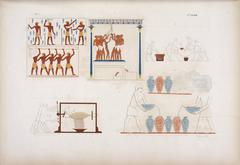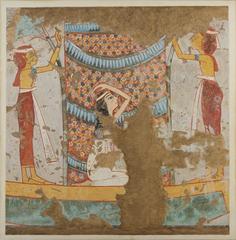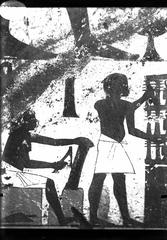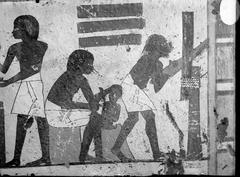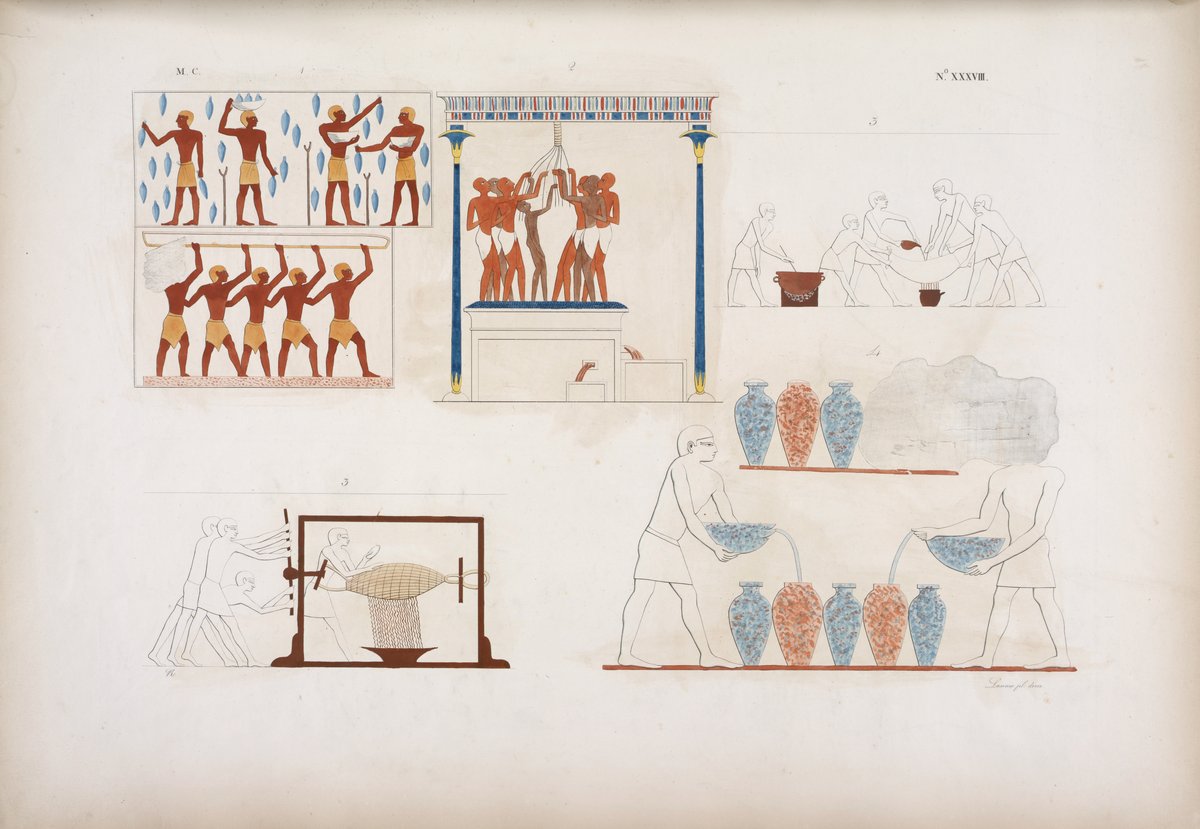
El-Khokha Luxor Egypt: Visiting Hours, Tickets, and Historical Sites Guide
Date: 14/06/2025
Introduction to El-Khokha Necropolis
El-Khokha Necropolis, located on Luxor’s West Bank, is an essential destination for travelers seeking to delve into the rich tapestry of ancient Egypt beyond its royal tombs. Part of the extensive Theban Necropolis, El-Khokha is renowned for its assemblage of over 100 rock-cut tombs, primarily from the New Kingdom period (circa 1550–1070 BCE), created for influential officials, priests, and scribes. Unlike the more frequented Valley of the Kings, El-Khokha offers a serene atmosphere and detailed insights into the everyday and spiritual lives of Egypt’s non-royal elite.
With its proximity to major mortuary temples like Queen Hatshepsut’s at Deir el-Bahari, El-Khokha is at the heart of Luxor’s archaeological landscape. Visitors can explore a unique array of funerary art, intricate wall paintings, and inscriptions that reveal the complexities of ancient Egyptian society—its religious practices, social structures, and daily routines. Ongoing conservation and restoration efforts, including the digital documentation and reopening of tombs such as Neferhotep’s, help preserve this invaluable heritage for future generations.
For up-to-date travel advice, ticketing details, and expert recommendations, consult resources such as Egypt Excursions Online and Earth Trekkers.
Table of Contents
- Overview & Historical Significance
- Notable Tombs of El-Khokha
- Artistic Features & Iconography
- Visitor Information: Hours, Tickets, and Accessibility
- Travel Tips and Nearby Attractions
- Facilities and Practical Advice
- Frequently Asked Questions (FAQ)
- Conservation Efforts & Recent Discoveries
- Conclusion & Further Resources
- References
Overview & Historical Significance
El-Khokha has been a premier burial ground from the late Old Kingdom into the Roman era, with most tombs constructed during the New Kingdom’s zenith. As an integral part of the Theban Necropolis—a UNESCO World Heritage Site—El-Khokha’s tombs reflect the religious, social, and economic life of Thebes when it was Egypt’s power center (UNESCO World Heritage Centre).
The tombs, strategically positioned near major mortuary temples, provide a narrative of ancient Egypt’s administrative and priestly classes. Their vivid wall paintings and inscriptions detail funerary rituals, agricultural abundance, family life, and religious symbolism, offering an invaluable resource for historians and visitors alike (Outlook Traveller).
Notable Tombs of El-Khokha
Tomb of Khaemhet (TT57)
Khaemhet, “Overseer of the Granaries of Upper and Lower Egypt” under Amenhotep III, is commemorated in TT57. This tomb features highly realistic agricultural scenes and rare depictions of the pharaoh, providing insight into New Kingdom economic life.
Tomb of Neferonpet (TT178)
Neferonpet, a treasury scribe in the Temple of Amun, is immortalized in TT178 with vibrant musical scenes, offerings to deities, and texts narrating his religious devotion.
Tomb of Khonsu (TT31)
Khonsu, “First Prophet of Menkheperre” (Thutmose III), is honored in TT31. This tomb is celebrated for its celestial ceilings and processional scenes, reflecting priestly authority and cosmic symbolism.
Tomb of Shuroy (TT13)
Shuroy, “Head of the Brazier-Bearers in the Temple of Amun at Karnak,” is depicted with his family and temple rituals, offering a personal perspective into the lives of temple officials.
Tomb of Benia (Pa-heq-amen) (TT343)
Benia, “Overseer of Work and Craftsmen,” features scenes of craftsmen, treasury management, and traditional funerary offerings, revealing New Kingdom labor organization.
Artistic Features & Iconography
The tombs of El-Khokha are celebrated for:
- Naturalistic Wall Paintings: Realistic portrayals of daily life, agriculture, and banquets.
- Vivid Colors: Remarkable preservation of blues, reds, and greens.
- Hieroglyphic Inscriptions: Prayers, spells, and autobiographical accounts.
- Religious Motifs: Scenes of funerary rituals, gods (Amun, Osiris, Hathor), and symbols like the ankh and djed pillar.
- Architectural Elements: Rock-cut chambers, decorated facades, false doors, and symbolic niches.
These elements collectively illuminate the values, beliefs, and artistry of Egypt’s non-royal elite (Egyptopia).
Visitor Information: Hours, Tickets, and Accessibility
Opening Hours
El-Khokha generally opens daily from 6:00 AM to 5:00 PM (with last entry around 3:30–4:00 PM). Hours may vary seasonally or due to conservation work—early visits are recommended (Sailing Stone Travel).
Tickets & Entry
- Where to Buy: Tickets are purchased at the main West Bank ticket office near the Colossi of Memnon, not at the tomb entrances.
- Pricing: Tickets covering El-Khokha and other tombs typically cost 60–120 EGP, with discounts for students and children. The Luxor Pass (approx. $100–$200 USD) grants access to major West and East Bank sites (Travel2Egypt).
- Tomb Rotation: Not all tombs are open at any one time; check the current list at the ticket office.
Accessibility
- Mobility: Uneven terrain, sandy paths, and steps make the site unsuitable for wheelchairs or those with significant mobility issues.
- Lighting: Tomb interiors are dim; a small flashlight is helpful.
- Photography: Flash photography is prohibited; photography with mobile phones is usually allowed, but professional cameras require a permit.
Travel Tips and Nearby Attractions
- Best Visiting Times: Early morning or late afternoon for cooler temperatures and fewer crowds.
- Guided Tours: Licensed Egyptologist guides are invaluable for context but are not permitted inside the tombs themselves (Egypt Excursions Online).
- Nearby Sites: Combine your visit with the Valley of the Kings, Valley of the Queens, Deir el-Medina, and the Ramesseum.
- Transportation: Taxis and organized tours are recommended; public transport is limited. Bicycle rentals are possible for adventurous travelers, but be prepared for heat and distance (Egipto Exclusivo).
Facilities and Practical Advice
- Restrooms: Available near the entrance; minimal amenities inside the necropolis.
- Refreshments: No cafés on site—bring your own water and snacks.
- Shade & Seating: Limited—wear sun protection and comfortable footwear.
- Parking: A small lot serves private vehicles and tour buses.
- Safety: Respect site rules, avoid touching wall paintings, and secure your belongings.
What to Bring:
Water (1–2 liters per person), hat, sunscreen, sunglasses, sturdy shoes, modest clothing, flashlight, guidebook or app, and small change for tips.
Frequently Asked Questions (FAQ)
Q: What are El-Khokha’s opening hours?
A: Usually 6:00 AM to 5:00 PM, but can vary—confirm before visiting.
Q: Where do I buy tickets?
A: At the main West Bank ticket office near the Colossi of Memnon.
Q: Are the tombs wheelchair accessible?
A: No, the terrain is uneven and access is limited for those with mobility challenges.
Q: Is photography allowed inside the tombs?
A: Flash is prohibited; mobile phone photography is generally allowed, but professional cameras require a permit.
Q: Are guides available?
A: Yes, Egyptologist guides can be hired but are not allowed inside the tombs.
Conservation Efforts & Recent Discoveries
El-Khokha has seen significant conservation, including digital mapping and the restoration of key tombs like Neferhotep’s, recently reopened to the public after years of expert work by international teams. These initiatives protect the necropolis against urban expansion and environmental threats, ensuring its preservation for future generations (Outlook Traveller, Deccan Chronicle).
Conclusion & Further Resources
El-Khokha Necropolis offers an intimate, richly detailed perspective on ancient Egypt’s administrative and religious elite. Its tombs, art, and inscriptions provide a window into a world often overshadowed by royal monuments. Careful planning around visiting hours, ticketing, and site logistics ensures a rewarding experience.
For more information, immersive guides, and travel updates:
- Download the Audiala app for interactive maps and expert-led tours.
- Follow Audiala on social media for the latest news and discoveries.
Explore Related Articles:
Virtual Tour and Map:
References
- El-Khokha Necropolis: History, Visiting Hours, Tickets, and Travel Tips for Exploring Luxor’s Ancient Burial Site, 2025
- El-Khokha Tombs in Luxor: Visiting Hours, Tickets, and Historical Insights, 2025
- El-Khokha Visiting Hours and Tickets: Your Guide to Luxor’s Historical Site, 2025
- El-Khokha Necropolis in Luxor: Visiting Hours, Tickets, and Historical Insights, 2025
- Earth Trekkers, How to Visit Valley of the Kings Luxor Egypt, 2024
- Outlook Traveller, Here is Why Luxor in Egypt is Every History Buff’s Haven, 2024
- Egyptian Ministry of Tourism, Official Luxor Visitor Information, 2024
- UNESCO World Heritage Centre, Theban Necropolis, 2024
- Travel2Egypt, Ticket Prices for Attractions in Luxor
- Egipto Exclusivo, Luxor
- Deccan Chronicle, Egypt unveils ancient rock-cut tombs and burial shafts in Luxor
